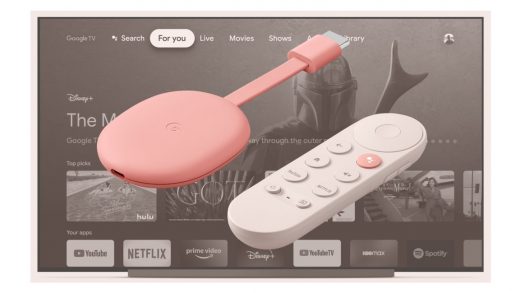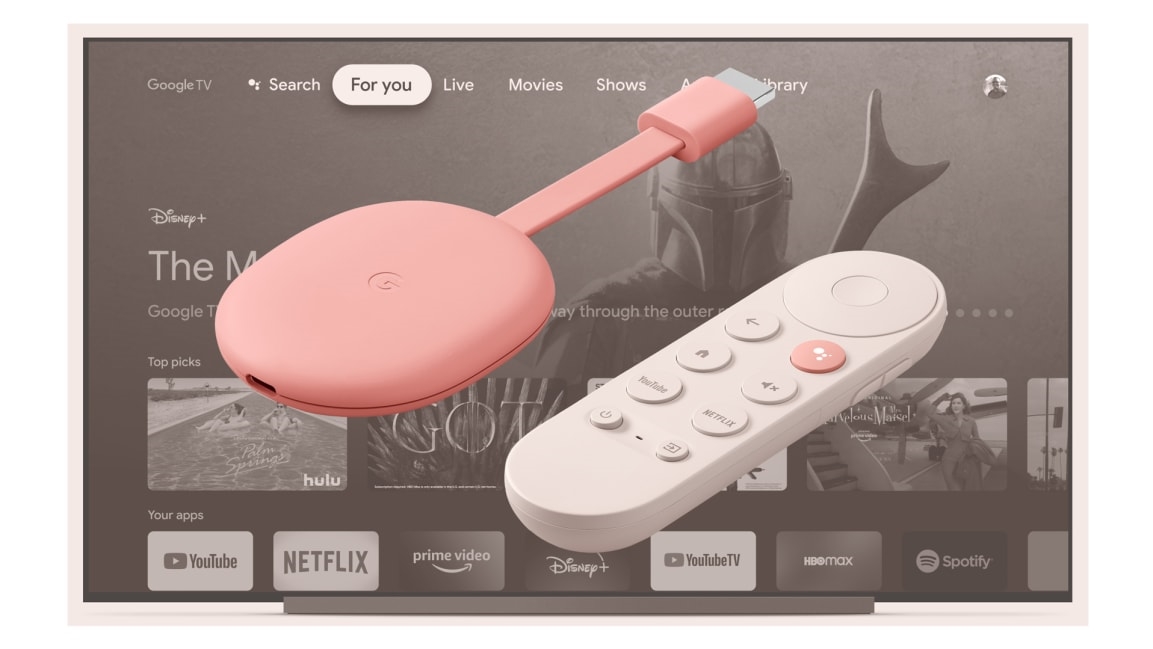Google is finally ready to fight Roku and Amazon in the streaming wars
It took about a decade, but Google may have finally gotten streaming TV right.
On Wednesday, the company is launching Chromecast with Google TV, a $50 4K streaming device that’s an answer to wildly popular streaming dongles from Roku and Amazon. Unlike previous Chromecasts, which required a phone or tablet to play videos on the TV, the new version comes with a proper remote control and its own on-screen menu system.
While the hardware ticks all the requisite boxes—4K HDR, Dolby Vision, Dolby Atmos, HDR10+, decent performance—it mostly exists to showcase the new “Google TV” software, which brings the catalogs of Netflix, Amazon Prime, Hulu, and several other popular streaming services into one universal guide. The idea is to spare users from having to jump through lots of apps just to find something to watch.
Google’s been trying to come up with a credible streaming TV platform since 2010, but the new Google TV seems like its most serious effort yet. If anything from the search giant stands a chance at loosening Roku’s and Amazon’s grip on the streaming TV business, this is it.
“If you think about what Google does, our mission is to organize the world’s information and make it easily accessible,” says Shalini Govilpai, Google’s head of Android TV. “We should be able to do that for media.”
One big menu
Google TV isn’t the only attempt to aggregate streaming video into a single menu, but other major efforts so far suffer from blind spots.
Apple’s “TV” app, for instance, lacks Netflix integration, and its universal guide is only available on expensive Apple TV boxes, which start at $150. Roku’s “Featured Free” section focuses exclusively on ad-supported video. The home screen on Amazon Fire TV devices can preview content from lots of streaming sources, but the layout is confusing and Amazon’s own Prime Video content often takes precedence.
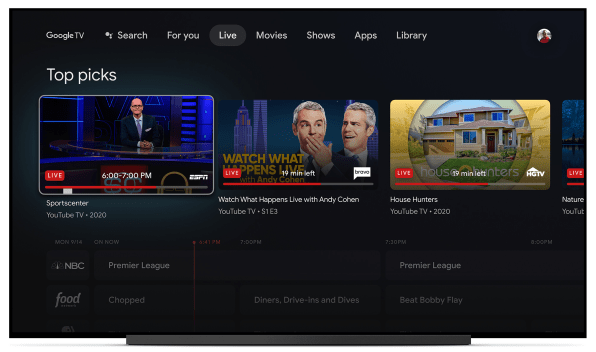
Google TV feels like the most cohesive attempt yet. The top of the home screen provides a row of movie and TV show recommendations based on your viewing habits, and below that is a typical app launcher. Keep scrolling, and you’ll find a list of your recently watched programs, trending movies and shows, genre-based suggestions, and personalized recommendations from YouTube. Aside from the occasional on-demand video purchase, the recommendations only come from services you’ve selected to appear on the home screen.
Users can also add movies and shows to a watchlist, either on the TV itself or through other devices. To help users keep track of shows, Google is rebranding its Google Play Movies & TV app on mobile devices as “Google TV,” and will let users search and add content from there. The “What to Watch” feature in Google Search will tie into Google TV’s watchlists as well.
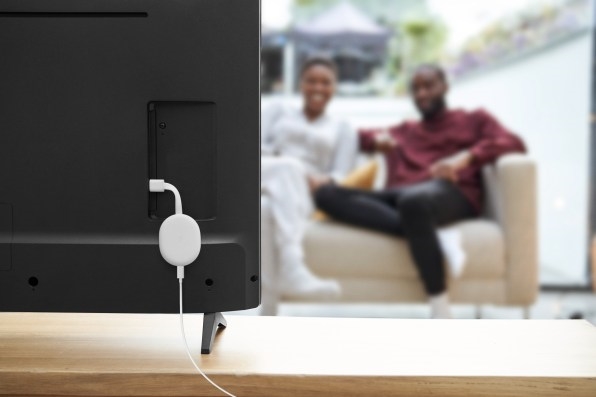
Google still has to work on getting some more services on board. There’s no guide integration yet with NBC’s Peacock, for instance, and some services, such as Amazon Prime, don’t feed into Google TV’s “Continue Watching” section. And while the software includes a guide for live TV sources, right now only Google’s own YouTube TV streaming service supports it. Overall, though, Google TV feels like a solid start and a sign that major streaming services are taking the effort seriously.
“I think a lot of our partners are excited about Google finally bringing its expertise of search and discovery to the TV experience,” says Rishi Chandra, the vice president of product and general manager for Google’s Nest hardware group. “We’ve never really brought all of our assets there, and it’s a lot of internal work to get there.”
Chromecast vs. Google TV vs. Android TV
For Google, the new software’s importance goes beyond the new Chromecast it powers. The company also has to juggle the needs of its many hardware partners, including smart TV vendors such as Sony, TV operators like AT&T, and streaming box makers like Nvidia. All of these companies currently rely on Google’s Android TV platform for their devices.
Google says Android TV isn’t going away, and that technically Google TV is just an interface layer on top of that platform. But Govilpai says this “Google-first experience” will start appearing on smart TVs and other streaming players next year. With the exception of pay TV providers, which have broad latitude to customize the Android TV software, Google is expecting all device makers to get on board with the new Google TV interface.
“At some point, this would be the preferred experience from Google,” she says.
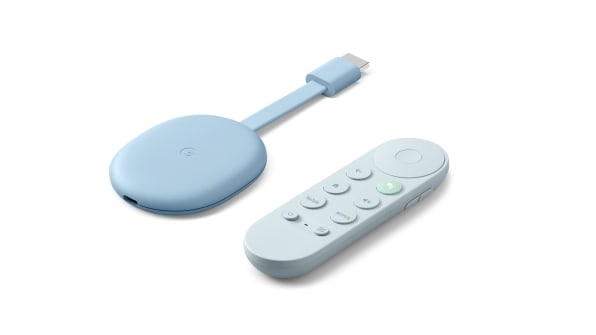
All of which will inevitably lead to some branding confusion. The new $50 Chromecast, which has a remote and runs Google TV, will now be sold alongside the old $35 Chromecast, which doesn’t. There will also be Android TV devices sold alongside Google TV ones for the foreseeable future, and pay TV providers will continue to sell Android TV devices indefinitely.
On top of all that, those with long memories will recall that Google TV was also the name of Google’s original attempt at a streaming TV platform, debuting in 2010 on devices on the Logitech Revue set-top box. (Despite claims by then-CEO Eric Schmidt that Google TV would run on the majority of all smart TVs by mid-2012, the clunky platform was poorly reviewed and quickly overshadowed by Chromecast. It quietly died in 2015.)
Nest’s Chandra acknowledges the potential for confusion, but says it’s to some extent a necessity given that the company’s game plan involves a lot more than one new streaming device.
“I’ll be honest, the challenge we have, and the unique thing Google is doing here, is we’re trying to do a very broad platform play,” he says. “It’s not this straightforward thing that we just go launch this box, and that’s what your branding’s going to be.”
An opening for Google
Even if Google can get past those branding issues, success is far from guaranteed. Leichtman Research Group reported in June that 80% of U.S. households have at least one connected TV device already, and a survey last year by Parks Associates found that Roku and Fire TV are by far the most popular makers of streaming media players in the United States. Worldwide, Roku and Amazon have 43 million and 40 million active users, respectively. It’s a saturated market, which means Google will have to convince a lot of folks to switch platforms.
But Google is banking on more than just a slicker approach to software. Chandra argues that Google TV is part of a broader push toward “ambient computing,” in which you seamlessly control your media around the house with a combination of voice commands, smartphone controls, and physical remotes. The new Chromecast is one piece of that puzzle alongside other devices such as Nest speakers and Google Assistant-powered smart displays. It’s an idea that some of Google’s rivals—most notably, Roku and Apple—don’t quite offer.
“The home has always been this notion of siloed experiences within rooms,” Chandra says. “Your TV experience is completely siloed from your phone, and your tablet, and your kitchen, and whatever it might be. Those walls are breaking down. How the TV interfaces with the rest of my smart home . . . is going to be a core criteria going forward.”
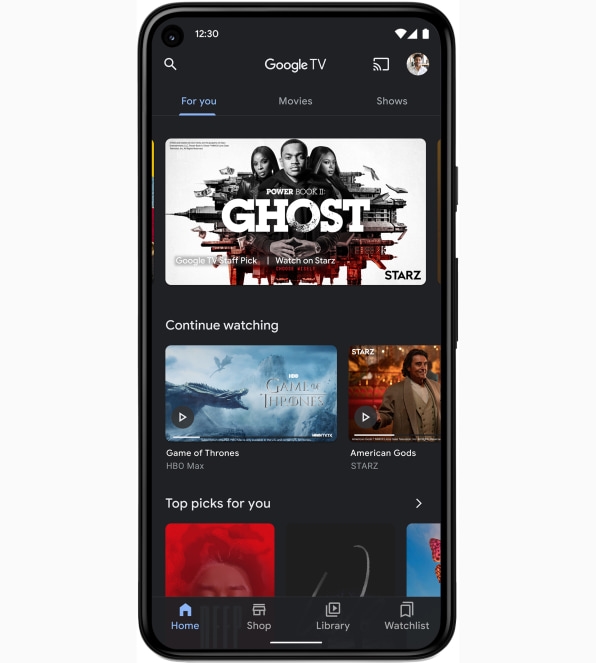
There’s also a more tangible factor in Google’s favor right now: It’s not fighting with major media companies like some of its rivals.
Amazon, for instance, is currently in carriage disputes with both AT&T’s WarnerMedia over HBO Max and Comcast’s NBCUniversal over Peacock, which means neither of those apps are available on Fire TV devices. Roku started carrying Peacock earlier this month but still lacks HBO Max. Those disputes are largely about how to split up ad inventory and whether Roku and Fire TV should be allowed to sell subscriptions directly to customers, thereby entitling them to a cut of the revenues.
Although Google won’t comment directly on those disputes, Govilpai notes that Google doesn’t take a cut of ad inventory from streaming providers. Instead, Google’s business model involves monetizing services such as YouTube and YouTube TV. A platform that’s more compelling to users brings more revenue to those services and makes for a stickier ecosystem overall. (Google TV does have one blind spot of its own, though: Apple TV+ is not available on the platform.)
“We have a business model that’s working for our partners,” Govilpai says. “We need to make sure that when they get onto this device, that they’re making more money, or more ROI than they would have done otherwise.”
That kind of friendly stance could obviously change if Google amasses more power in the streaming wars. But at the moment, it gives Google a fighting chance. For the first time in years, Google has made a streaming device worth caring about, and it’s arriving at just the right time.
(24)

